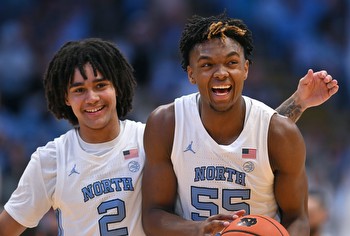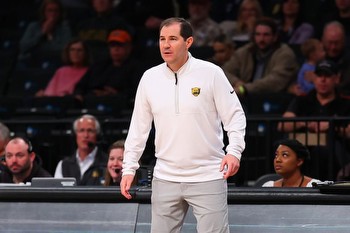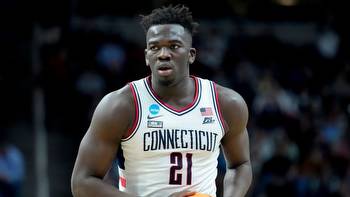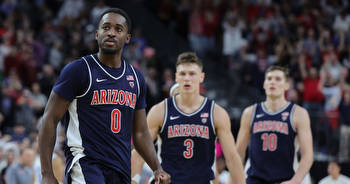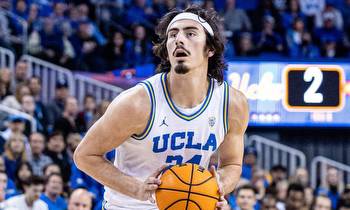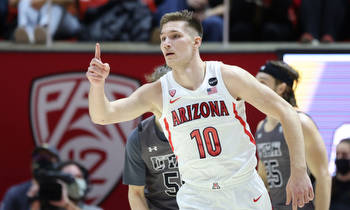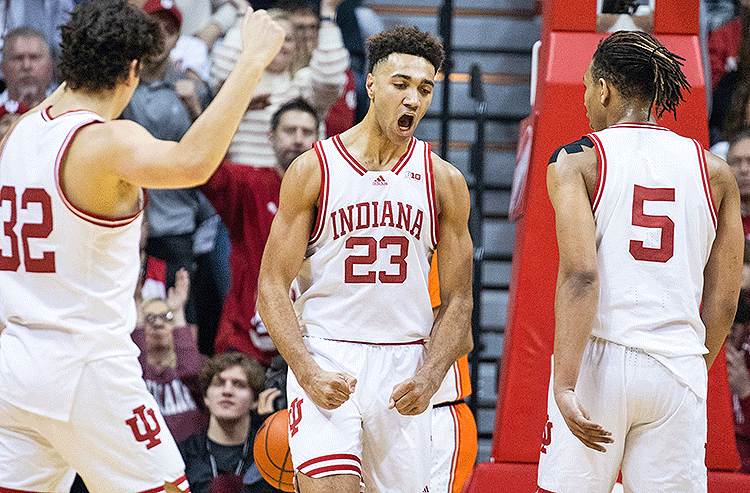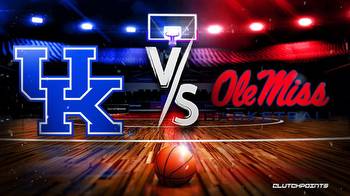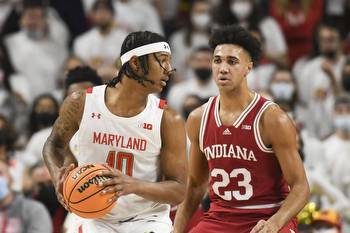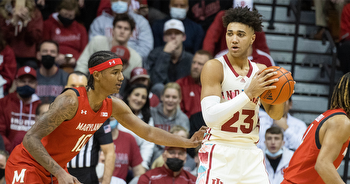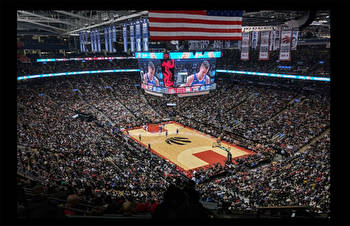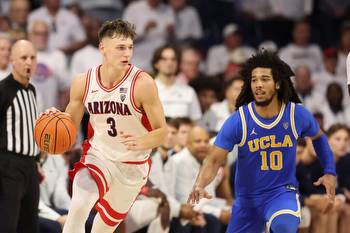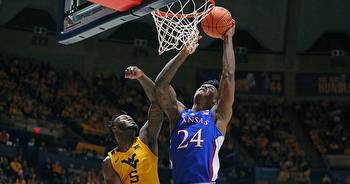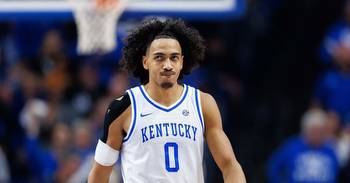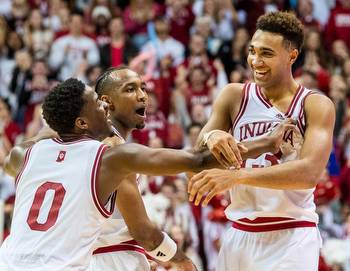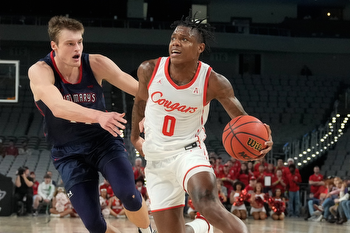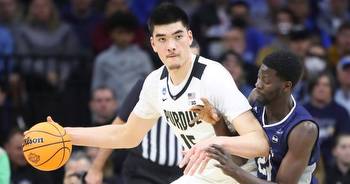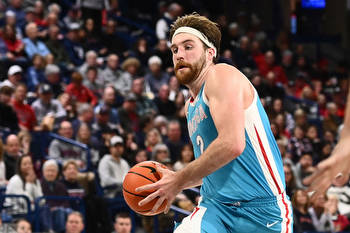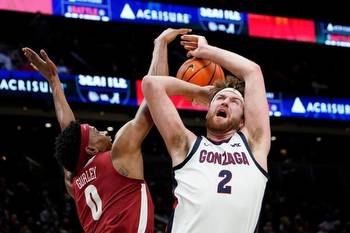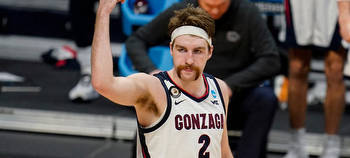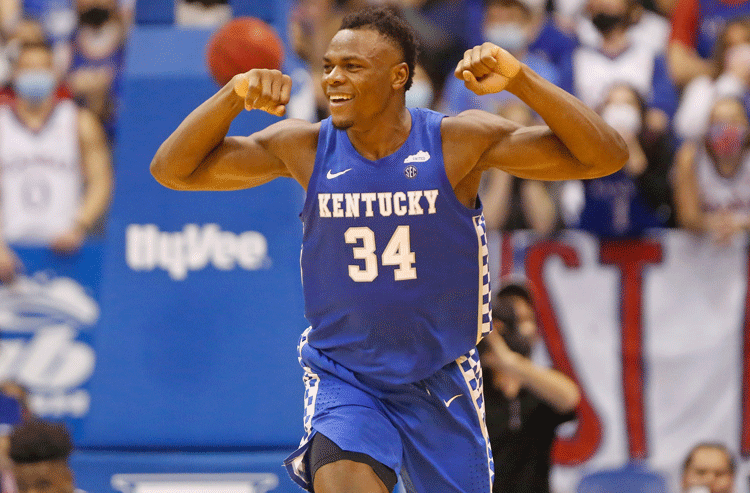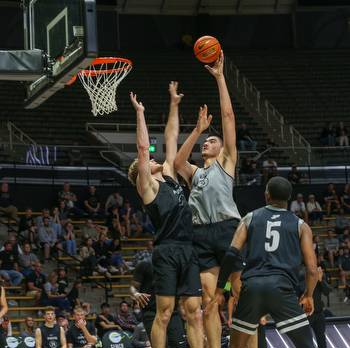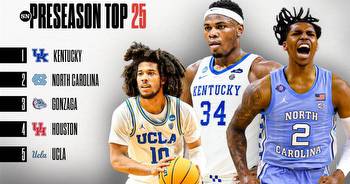The 2023 NCAA Tournament Could Cap Off the Year of the Big Man
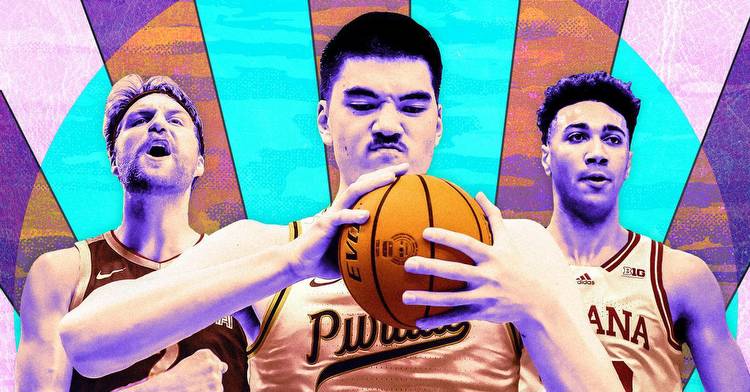
Regardless of whether his Purdue Boilermakers even make it to the Final Four next month, Zach Edey will almost certainly leave Houston with a trophy. The 7-foot-4 center is the overwhelming favorite to win this year’s Naismith Award. And if Edey, the nation’s tallest player, does receive the honor, it will fit with a season in which the average player height spiked to 77 inches, the most in the 17 years of KenPom data.
College basketball has been dominated by big men throughout the 2022-23 season. Seven of the top eight players in the Naismith race, based on betting odds, stand at least 6-foot-8, including Indiana’s Trayce Jackson-Davis, Arizona’s Azuolas Tubelis, Gonzaga’s Drew Timme, and last season’s winner, Kentucky’s Oscar Tshiebwe. All of those guys will play major roles in the men’s NCAA tournament, as could a number of other bigs: do-it-all power forward Jarace Walker is Houston’s top NBA prospect; Kyle Filipowski and Dereck Lively II lead Duke, the country’s hottest team and also its tallest; Adama Sanogo could help the Connecticut Huskies get back to the Final Four; Ryan Kalkbrenner of Creighton won the Big East’s defensive player of the year award for a second straight season and has been one of the country’s most efficient low-post scorers. And even Jordan Brown and Drew Pember—of Louisiana-Lafayette and UNC-Asheville, respectively—are looking to lead their teams on Cinderella runs. This year’s tourney might resemble an action sequence from Pacific Rim at times with all of these towering stars in the field of 68.
This comes after a regular season in which teams collectively shot 50.5 percent on 2-point field goal attempts, the highest mark in history, according to KenPom. And compared to recent years, teams are scoring more points in the paint on average and scoring more on post-ups while attempting fewer 3s. All of this is by design.
In 2019, the NCAA announced it would be pushing its 3-point line back to just over 22 feet, an effort to open up the lane and promote more play on the interior while discouraging teams from just jacking up 3s. And now, we’re starting to see the consequences of that change. With more space on the interior, big men have more room to work in the low post. And with helping defenders having to cover more ground to get out to shooters, it’s easier to punish defenses that double in the post by using kick-outs. That has made a talented big man more valuable than he may have been a few years ago.
Defenses designed to take away the interior have been hit hard by the rule change. One effect that stands out is the waning usefulness of the ubiquitous “pack-line” defense, made famous by Dick Bennett, whose son Tony won a national title at Virginia using the system. The pack line is based on an imaginary line a few feet inside the 3-point arc. Defenders playing off the ball are instructed to not go beyond that line and to play in the gaps between their man and the ball, which helps them cut off passing and driving lanes.
The off-ball defenders are already in a help position if the ball handler drives, and they’re expected to recover and close out on any 3-point shot if their man gets the ball. With the 3-point line pushed out, those gaps widen and defenders need to cover more distance to get out on shooters. In other words, with more court spacing, it’s harder to pack defenders inside. Since 2020, Virginia hasn’t ranked inside the top 25 in defensive efficiency. It had spent the previous five seasons ranked in the top 10, per KenPom.
Having a big man who can reliably score in the post just makes offense easier to come by now. College teams aren’t flush with skilled perimeter players who can “go get a bucket” in isolation, which is why they’re forced to run more offense than your typical pro team. A dominant big is a source of easy baskets, and those are hard to come by at the college level—even for the best teams. Defenses, wanting to cut off that source, are forced to take drastic measures to do so, and that leads to other benefits. Namely, open 3-point attempts.
Purdue has made the whole plane out of this concept. They’ll throw it in to Edey on a post-up, and he’ll either shoot a hook shot over some poor defender who isn’t a million feet tall, or the defense will collapse to stop him and leave one of his teammates open for 3. Those teammates don’t shoot the ball particularly well, but only 61 teams have shot more open catch-and-shoot 3s than the Boilermakers have this season, per Synergy. That’s Edey’s gravity at work.
The junior out of Canada doesn’t have the deepest bag of post moves, but he has good touch around the basket and he’s a willing passer. That’s more than enough when you’re half a foot taller than the other team’s biggest player.
But not all of these big guys are just leveraging a size advantage to get buckets. We’ve seen a wide variety of skill sets find success across the sport this season. A player like Timme, for instance, relies on a deep bag of post moves to get his points down low. The Gonzaga senior is one of the most efficient post-up players in the country, averaging 1.11 points on those plays, which places him in the 92nd percentile. He is straight-up unguardable on the left block when teams don’t send help.
And you know what’s better than one dominant big? That’s right, two dominant bigs. That’s what Arizona is working with in the duo of Tubelis and Oumar Ballo. Coach Tommy Lloyd, a longtime assistant under Mark Few at Gonzaga, likes to spread the floor and have his bigs play a high-low two-man game.
Both are skilled passers and can finish around the basket. While Tubelis is better at making catches on the move after cuts and flashes to the middle, Ballo plays more like a traditional post-up player.
Indiana’s Jackson-Davis is one of the more exciting big men in the country thanks to his speed. Nobody runs the court better, and against slower bigs, that can be a real weapon for the Hoosiers. Watch him burn Edey down the court for a dunk here.
Jackson-Davis is a smaller player, and will probably need to develop a perimeter jump shot if he’s going to carve out an NBA role. But his inside-only approach is serving him just fine in college.
And last year’s Naismith Award winner, Tshiebwe, has essentially made his entire game out of offensive rebounds. Nearly a fifth of his possessions come off of boards, according to Synergy, which is a huge number. Compared to the other top big men around the country, only Edey really comes close.
Bigs have dominated this college basketball season, and they’ve done it in different ways. You have the post dominance of Edey and Timme, the mobility of Jackson-Davis and Tubelis, the perimeter play of Filipowski and Walker, and the relentless rebounding of Tshiebwe.
That variety of scoring is exactly what the NCAA was looking for when it pushed the 3-point line back a few seasons ago. The version of the college game at that time—a glorified 3-point shooting contest featuring mostly bad shooters—was no fun to watch. But this season, the basketballhas been very fun to watch. We’re coming off one of the best conference tournament slates in recent memory, and the NCAA tournament should provide similar entertainment over the next few weeks—thanks in large part to this impressive cast of big men.
